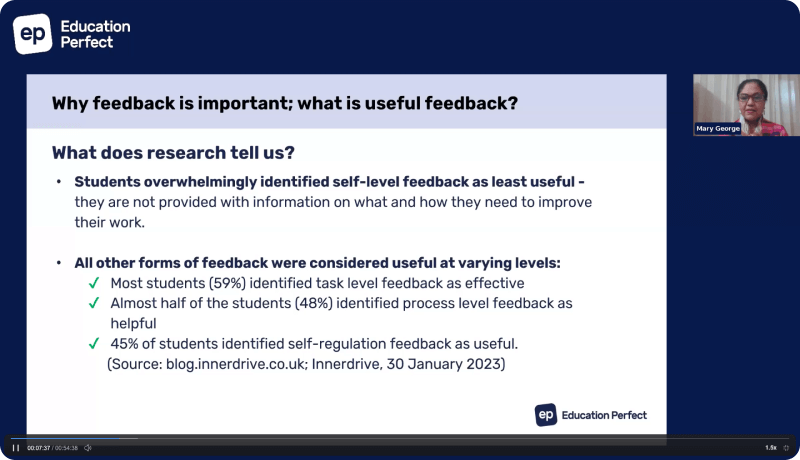Engaging students through video creation.

As a languages teacher, one of my favourite types of learning activities and one of my students’ favourite activities was video creation. I used to find this was a great way of engaging students in their learning and putting their newly acquired language skills into practice. From my experience, it was a learning activity that all students would enjoy, as there was always a different option for students who didn’t want to perform live on camera – they could use various animated programmes or stop animation techniques as long as they recorded their voice. At the end of a video project, students would be proud of their final product and it was a great way to share the learning that had taken place.
We are currently in a transition phase all around the world, where some countries are going back to school after an extended period of lockdown, some countries are still in lockdown, and some are moving towards a set-up where students will work partly from home and partly from school. I thought it would be interesting to explore video creation as a learning tool, as it is something that can take place in the classroom to re-engage students, but can also be equally effective in the remote-learning setting. It would also function as a great learning tool and bridging activity for a group, with some members back in the classroom, but others still learning from home – resulting in a product that they can all share at the end.
To start with I am going to explore some of the benefits of student video creation. Schuck and Kearney (2004) have carried out extensive research in this area and as cited in a paper released by the Centre for Educational Multimedia (CEMM) at Monash University, they have suggested the following benefits of student video-making from their research:
- Literacy skills: Including media, visual, cultural and critical literacies in communication and presentation skills: oral, written, reading, listening, visual.
- Interviewing skills in organisational and teamwork skills.
- Organising and planning skills: managing, leadership, negotiation and social skills
- Higher-order thinking skills: Problem-solving, reasoning, planning, analysing, creating and questioning skills.
- Metacognitive skills: Becoming aware of how one learns; reflecting on their own learning.
- Affective skills: Enhancement of self-esteem; risk taking; value of subject, appreciation of films; care of equipment.
- Movie-making skill development and related language development: Storyboarding, film techniques, editing, publishing etc. and use of associated jargon.
The Monash university report also cites a study by Reid, Burn and Parker (2002), which concluded that student video-making production supported a range of learning styles including kinaesthetic, spatial, musical and verbal. They also reported increased development of skills such as problem-solving, negotiation, reasoning and risk-taking.
Samantha Louise Clarke from the University of Sydney makes the following statement about the benefits of video:
“Video can be a great way to embrace student-generated content in your teaching. Getting students to create videos and other rich multimedia resources may open up new forms of assessment, innovative learning activities, and opportunities for peer learning and engagement. Producing video content can be an effective way for students to learn and can lead to a number of benefits, including the developing graduate qualities, improved final exam performance, and building an ongoing resource for student learning.”
There are different types of video production tasks that might take place. Courtney Sears, 2018, provides a helpful summary of these:
- Learning product videos: These are videos where students demonstrate their learning in some way.
- Response videos: These are videos where the students respond to a question or a stimulus.
- Reflection videos: These are videos where students reflect about the learning process.
- Tutorial videos: These are videos where students teach others about a concept or how to do something. Tutorial videos are a great way to show a deep understanding of a skill.
The possibilities of video-making tasks across subject areas are endless. Here are just a few ideas, shared by my colleagues in different subject areas, to give some examples, but I would love to hear successful ideas from others.
English:
- Make a short video reviewing a book that you have read
- Create a video dialogue with a character from a book
- As part of a film study, get students to storyboard their own film and film it.
Humanities:
- Create a video dialogue with a famous historical character
- Recreate a moment in history and make a film/documentary of it
- Create a documentary about your local area and what makes is liveable
Languages:
- Create a role play of an everyday scenario – eg ordering in a restaurant or shopping for clothes and make a video of it.
- Make a video teaching your classmates some new vocabulary
- Write a short film in another language. Go through the process of planning, storyboarding and then filming and editing.
Maths:
- Have each student produce a tutorial video on each aspect of a topic. The aggregate of videos can be a revision course.
- Have students pose a problem for others via a video
- Have students explain a solution to a problem via a video
Science:
- Make a video of a science experiment done in class
- Create a documentary that explains a Scientific concept
Ideas that work across all subjects:
- Record a Ted Talk about a relevant topic
- Exchange video messages with other schools about a topic you are covering
An important part of the video-making process is the sharing of videos. It is great for the students to have the opportunity to share their learning and video success with their peers. You could end the task with a film festival event where videos are shared with the class and you might even invite parents or the principal to attend and make a really big deal of it. This could be done in the classroom or over Zoom or Google Meet. Otherwise alternatively, you might ask the students to share the videos on a class LMS such as Google Classroom or a class social media group. You can also use one of the many video-sharing tools such as Flipgrid. Depending on the task, you can ask students to comment on the videos of their peers, but of course give guidelines as to what is appropriate.
Finally, I thought it would be useful to include some top tips for setting up video projects in the classroom:
- Prepare students well for the task – give the students clear guidelines.
- Make sure the students have clear success criteria before beginning the task.
- Ensure that your students do some planning before filming – get them to complete a storyboard first. Here is a link to a site with many free downloadable storyboard templates.
- Before starting, run a workshop focusing on video-editing skills – you could bring an expert in to do this if you don’t have the background knowledge – or it could be run by a student in the class who is already an expert.
- Optional: make your own video first that models what you want the students to work towards.
I hope that this article has outlined the benefits of using a video creation task and given you some ideas about how you might go about implementing this in your course. I would love to hear about any successful video creation tasks that you have done with your students or any top tips that you have learned from your experience.




